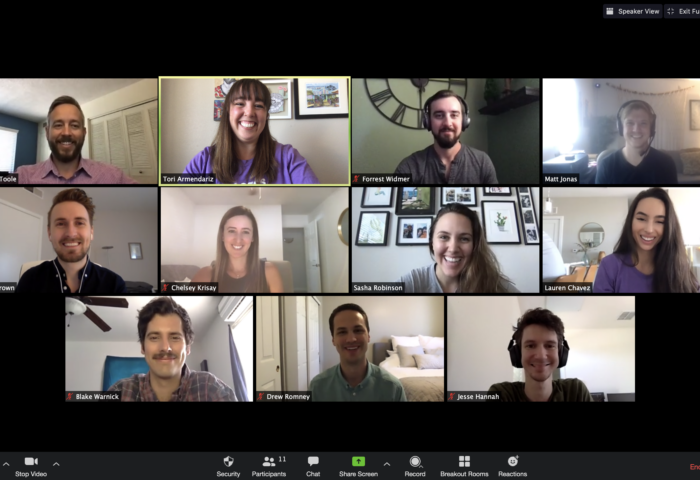
Articles
Onboarding Packets 101: Creating the Ultimate Guide for New Hires
September 15, 2022

Think back to one of your first days at a new job. You came to work like the first day of school, eager and ready to handle whatever was thrown at you.
But what was thrown at you? A 20-page onboarding packet.
Look, onboarding is extremely important. According to the Harvard Business Review, a good onboarding system accounts for 62% greater new hire productivity and 50% greater new hire retention. But onboarding packets are important to this process, too.
There are ways to make your onboarding packet a better introduction to your company. One that feels more like an opportunity for career advancement and less like homework.
But first, let’s look at the basics before diving into how you can elevate your approach to onboarding.
Why onboarding packets are so important
An onboarding packet has all the necessary information a new hire needs while serving as an introduction to your business. It has the stuff they need to sign, tasks they need to complete, and information they should know before they can take on their workload.
When new hires are given the information they need to do their job well, it can reduce turnover and increase their confidence.
The right onboarding packet makes it possible for new hires to learn at their own pace and consistently access the information they need. It may include the company’s values, SOPs, and describe their role in context. It’s a great way for them to develop a robust understanding of what your company is about and what they’ll be doing.
A good onboarding packet can also speed up the onboarding process. After nailing orientation, onboarding is the next step.
And it can take a long time — sometimes as long as an employee's full first year! So having all that new information in one place saves the new hire (and those training them) a lot of time.
The key elements of a well-crafted onboarding packet.
The welcome letter
The first thing in your onboarding packet should be a welcome letter for your new employee. New hires are adjusting to a new environment, so letting them know that they are welcomed and appreciated can help set the tone for their experience.
.gif)
In your welcome letter, you can clue new employees in on workplace culture, your mission, and company values. These are important first steps to the onboarding process, as your company culture is what they may use to guide their behavior and workplace interactions.
A welcome letter keeps employees aware of your business's most important values from the start. It’s the very first top-down communication they’ll receive, so focus on making it feel authentic!
Important passwords and log-in information
Getting locked out of your email or POS system in the first week is bad for morale, so get new hires teed up with the accounts they’ll need to get started. This includes their company email, passwords, and login information for portals. Keeping it all somewhere accessible will save everyone from the time (and headaches) that come with resetting passwords.
Keep passwords consistent and allow new hires to change them as they log in. Though good security practice is to use different passwords for different accounts, keeping a consistent format, phrase, or pattern saves them from having to memorize vastly different passwords.
If you’re using a paper solution for your packet, it can be hard to mesh these accounts with their links. You may want to consider including QR codes to link out to different portals. However, digital onboarding packets are far more secure and make the process of linking to necessary portals a lot easier.
Important HR paperwork
A new hire is going to have a lot of documents to sign before they can get started. There’s going to be plenty of HR paperwork, so make it as accessible as you can. Outline the different sections clearly and highlight places where they need to sign and date.
Make sure everything is there so that there are no hiccups on HR’s end. Be sure to include:
- NDAs.
- Code of conduct agreements.
- Tax forms.
- Payment authorizations.
.gif)
While no one loves doing paperwork, this is all pretty important stuff, so try to make it as accessible and engaging as possible.
If you’re using a digital onboarding packet, doing that is a lot easier. You can include videos, gamify paperwork with progress bars, and group together paperwork in a seamless way.
Org charts and team structure
In your onboarding packet, you’ll want to outline org charts and team structure. New hires should be introduced to the workplace hierarchy so they’re not asking questions of the wrong people. If you’re able, include a welcome letter from their direct supervisor or mentor so they know who to go to with any inquiries.
Knowing who to contact and being introduced to an immediate team of colleagues keeps new hires from feeling like the lost new kid, so take the time to clarify channels of communication.
.gif)
An org chart clues new hires in on who’s who. While they'll organically meet different members of your team, keeping names, roles, and faces straight while starting a new job can be overwhelming. You can spare them the awkward introductions easily with an org chart.
Also, it gives them an idea of company growth.
Knowing there’s a clear path for growth in the business reduces turnover and can keep new hires ambitious and eager to collaborate.
A digital onboarding packet is great here, as you can easily update and keep your org chart current.
Important training information
New hires should have access to all the important training information they’ll need to complete their onboarding. This includes training dates, online training portals, and SOPs for completing training.
This is a huge part of your onboarding packet. So, it’s a good idea to keep this information detailed and robust so employees can easily refer back to them in the future.
There should be multiple sections, and it should clue the new hire in on every piece of training they’ll need to complete. Having a calendar of when they’ll complete different trainings is a great thing to include, too.
Case studies, best practice, application
Including case studies and scenarios in your training helps employees understand what their roles look like in context. It demonstrates how skills should be applied, where resources should be allocated, and how to handle potential curveballs.
When outlining best practices in your onboarding packet, collaborate with your team.
Include relevant department heads in the development of these sections, and use the knowledge you’ve gathered in your company wiki to throw in extra tips.
Elevate your onboarding packets
Ditch the outdated, personalized folders.
Huge, stapled packets are daunting for new employees, and it can be really hard to keep track of information when it’s included in pages and pages of a physical packet. Plus, there’s so much more you can do if it’s digital!
Going paperless with your onboarding packet is good for the environment, saves on resources, and makes finding information that much easier for a new hire. Besides, who has the time to leaf through a physical packet from start to finish?
By having onboarding information consolidated in a digital space, new employees can easily answer their own questions. Digital onboarding packets should be organized with the employee in mind, making knowledge retention that much more attainable.
Incorporate interactive elements.
If you’re making your onboarding packet digital, you can include interactive elements that make it easier to digest information. This might include videos, quizzes, and games. Bringing your information to life keeps onboarding engaging and makes the training time fly by.
Plus, it makes information easier to learn and remember. This means taking the time to craft the user experience of your onboarding processes with employee engagement in mind.
Interactive elements put knowledge into practice. When you’re training a new hire on a process, let them practice doing it themself rather than having to listen to someone explain something that is best experienced.
Help employees meet their full potential with effective onboarding
You want to help your new hires grow with the right knowledge and training under their belt, and that starts with a robust onboarding packet.
Creating an onboarding packet doesn’t need to be a harrowing experience. The right knowledge management system can help you make onboarding material that is exciting, informative, and easy to navigate. By making content engaging and accessible, you not only set your new hire up for success but also reduce the risk of turnover.
Effective onboarding is vital to the success of a business. By facilitating knowledge sharing in your onboarding process, you’re giving new hires the tools they need to perform their best. And, once you have a solid process down, you can incorporate it into your business playbook for future hires.
Similar Blog Posts










